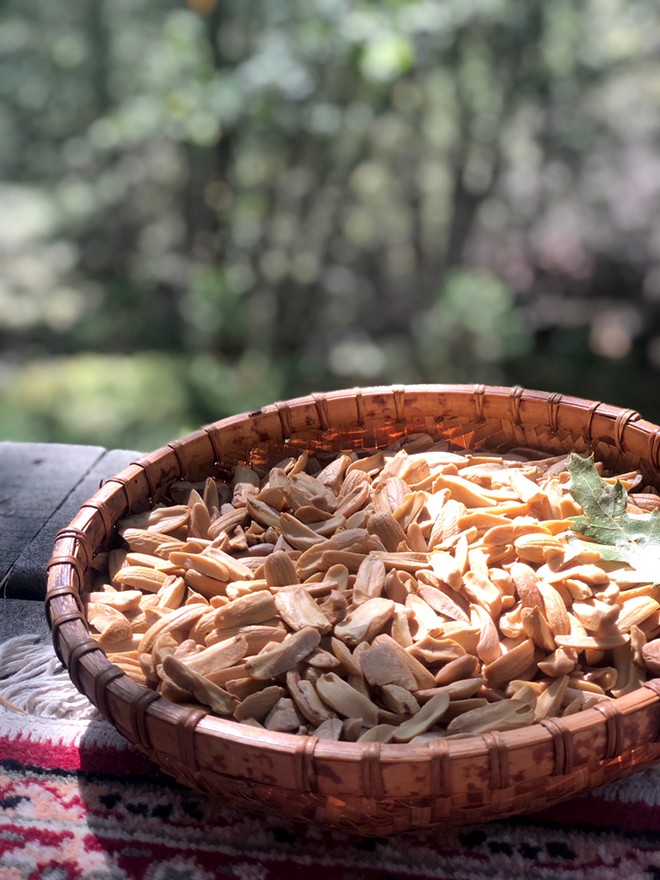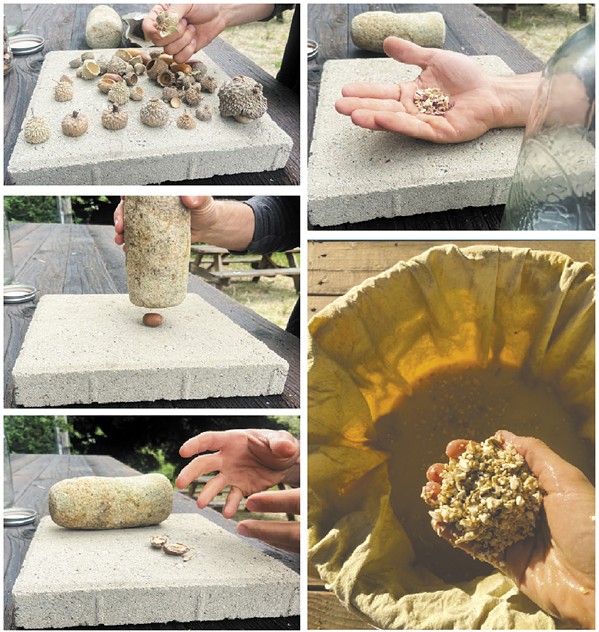[
{
"name": "Newsletter Promo",
"id": "NewsletterPromo",
"class": "inlineCenter",
"insertPoint": "4",
"component": "15264767",
"requiredCountToDisplay": "0"
},
{
"name": "Ad - Medium Rectangle CC01 - 300x250 - Inline Content",
"class": "inlineCenter",
"insertPoint": "8",
"component": "15582119",
"requiredCountToDisplay": "12"
},{
"name": "Ad - Medium Rectangle LC01 - 300x250 - Inline Content",
"class": "inlineCenter",
"insertPoint": "18",
"component": "15582122",
"requiredCountToDisplay": "22"
},{
"name": "Ad - Medium Rectangle 9 - 300x250 - Inline Content",
"class": "inlineCenter",
"insertPoint": "28",
"component": "15582121",
"requiredCountToDisplay": "32"
}]
Chowing down on an acorn probably conjures up images of squirrels grabbing one off the ground and running up a tree to eat it. Believe it or not, acorns were once a focal point of the local human diet.
Although acorns are bitter as they contain lots of tannins, they can be turned into a tasty flour that carries many health benefits.
Jesse Trace, a restoration ecologist, has spent his career studying the benefits of oak trees on California’s climate and discovered they require very little water to grow and offer a large harvest.
Interested by the history and culture of Native Californians and their practice of turning acorns into flour, Trace began harvesting the acorns dropped on his family’s 80-acre farm that was tucked away in the hills surrounding Morro Bay.
“I studied sustainability in Costa Rica, and I came back, and I was thinking, what’s kind of the root in California, and it’s oak trees and acorns,” he said. “It was as much as 50 percent of the native Californians’ diet.”
Trace’s friend Kira Greene, a California naturalist, and her friends at Quercus Collective also begun harvesting acorns for flour to help develop a deeper connection to their region just outside Sacramento and to the native tribes that once lived there. They also started building community.
“The beauty of the process is traditionally you’re doing it socially and you’re in groups and you get to chat, and you get to pass time with friends with a hand task,” she said. “Some of the most fun I’ve had is processing acorns with friends as well as putting on an audio book or a movie during winter and multitasking it.”
Packed with nutritious, dense minerals and high in both protein and healthy fats, acorns are a well-balanced food source that anyone can harvest off the ground for free, Greene said. Especially in SLO County, which has the largest number of oak trees in the state.
Used for pizza crust, breads, and other sweets, acorn flour is dense and heavy but versatile. Greene said when paired with a lighter flour, it makes for the perfect recipe.
“Most flour we use for baking, like for cookies or bread products, won’t turn out as you expected if you use 100 percent acorn flour, so I’d say like most recipes on the internet say to use up to a third or a half so that way the density won’t be affected too much,” she said.
Acorns are also very bitter, and Trace said processing them correctly by stripping away their tannins can take a few weeks.
As soon as acorns are harvested from the ground or off the tree, they need to be stored somewhere cool and dry and placed in an airtight container like a Mason jar. Trace said the beautiful thing about acorns is that they can last 20 years or longer if stored correctly.
With something heavy around the house, such as a hammer, break the shell of the acorn and harvest the meat inside. Place the nut meat back into the storage container, fill it with water, and let it soak overnight.
“That’s called leaching, and you leach the water over one to two weeks depending on the acorn,” Trace said. “Every other day you’ll pour out the water and add new water. The tannins are water soluble so they will pour out with the water.”
Tannins will turn the water brown, and Trace said it’s important to repeat this process over and over until the water stays clear. The acorns are then ready to be dried and blended into a flour and used.










